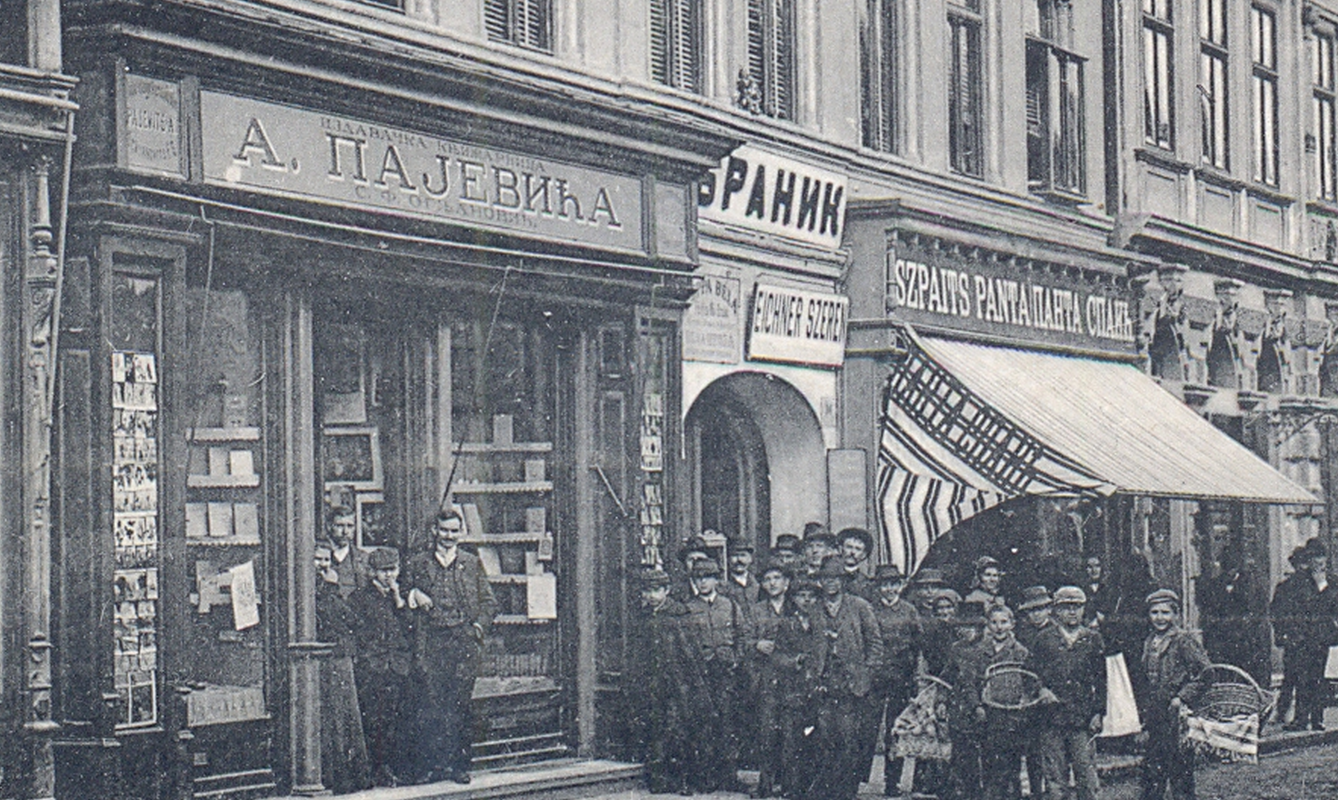The printing and publishing industry, as well as literature, played an important role in the history of Novi Sad. They represent a great part of the historical heritage of the city and are to be compared to the most developed literary funds of the far bigger and older European cities.
Brothers M. Popović – Kirilo Ćira Popović (1839-1912) and Đorđe Đoka Popović (1846-1907), Luka Jocić (1839-1926), Arsa Pajević (1841-1905) and Svetozar Ognjanović (1869-1927) gifted us with an incredible amount of works.
Many significant bookstores and publishing companies recorded enormous results that are hard to imagine even today, despite the modern technology and modern production, as well as the higher cultural and educational level of the readers nowadays. In the period from 1875 to 1905, the Popović brothers’ bookstore published 950 printed works in over 3 million copies, with the capital of over 200.000 forints.
‘Their books will be distributed from Tsargrad to New York.’ It was the biggest bookstore not just among Serbs in Vojvodina, but in general.
In 1907, the bookstore stated: We remind our brothers and sisters from abroad, those living in America, Asia and Australia, that their needs will be most accurately met when the ordered books are paid in advance, either through the post office or some other way. When we get the money, we will do the work.
That’s how the greatest Serbian bookstore in the world advertised and promoted itself.
Platon’s Printing House
Arsa Pajević took over Jovan Subotić’s former Platon’s Printing House in Dunavska Street in the 19th century. Thus, Arsa owned both the bookstore and the printing house. He sold the printing house to Đorđe Ivković in 1895. Back in 1848, Danilo Medaković founded Ivković’s printing house, i.e. Platon – Subotić – Pajević’s printing house. Arsa Pajević and his wife Anka are remembered as great benefactors of the Serbian people. They donated around 200,000 crowns to the Serbian Grammar School, around 16,000 crowns to the Serbian School for Girls in Novi Sad, and were one of the founders of the Srpkinja Novosatkinja cooperative. They helped the poor and the hungry in Kosovo and schooled a couple of Serbian men… Among the many prizes and acknowledgements, they were awarded two state orders from the ruler Nikola and king Aleksandar.
Pajević printed almost all of Zmaj’s magazines: Starmali (1878-1889), Neven (1880-1889), Javor (1889-1891) and was their patron. In addition to this, he printed a large number of other magazines and publications: Branik (1885-1914), Srpski Sion (1891), Istorija Novog Sada (1894) and so on. He also did literary work. Branislav Nušić, the greatest Serbian commediograph, lived in the house of Arsa Pajević during the period of managing the Serbian National Theatre. Pajević’s house was the meeting place for writers, as well as cultural and public employees. After the First World War, it became home to the Serbian Reading Room. Arsa Pajević died in 1905 and Svetozar Ognjanović took over his remarkable bookstore a year later. Ognjanović’s rich bookstore was robbed by Hungarians in 1914, burning certain collections worth 80,000 crowns.

Fuks’ Printing House
Ignjat Fuks’ printing house earned the epithet of the oldest printing house in Serbia. Jovan Kaulici, the famous bookstore owner, opened it in 1843. Fuksa’s printing house wasn’t marked nationally nor politically. However, it was thought of as a German bookstore because the owner was German and because a German weekly was being published there. In Fuks’ printing house, many Serbian magazines and newspapers were printed, such as Danica, Komarac, Seljak, Domišljan, Putnik, Nedeljni list, and Javor, for a period of time.
In the Zastava newspaper, in April 1880, there was news about Luka Jocić and a opening their own bookstore in 16 Dunavska Street. Jocić and Ivković were given permission to print and sell literary and school books, as well as paintings and school supplies. In 1888, Đorđe separated from his business partner in order to open his own printing house and a bookstore. Meanwhile, Luka Jocić slowly started to sell out his bookstore. He completely closed it down at the beginning of the 20th century.
Zastava, Večernjača, Zavičaj, Hedeljne novine, Radikalna reč, Žena and other newspapers and magazines were printed in the Serbian printing house of Svetozar Miletić. Before the First World War, Novi Sad had 14 printing houses. That’s why people used to call Novi Sad a small Leipzig, since most of the German books were printed in Leipzig.
Author: Ljiljana Dragosavljević Savin, master historian
Photo: Museum of Vojvodina







